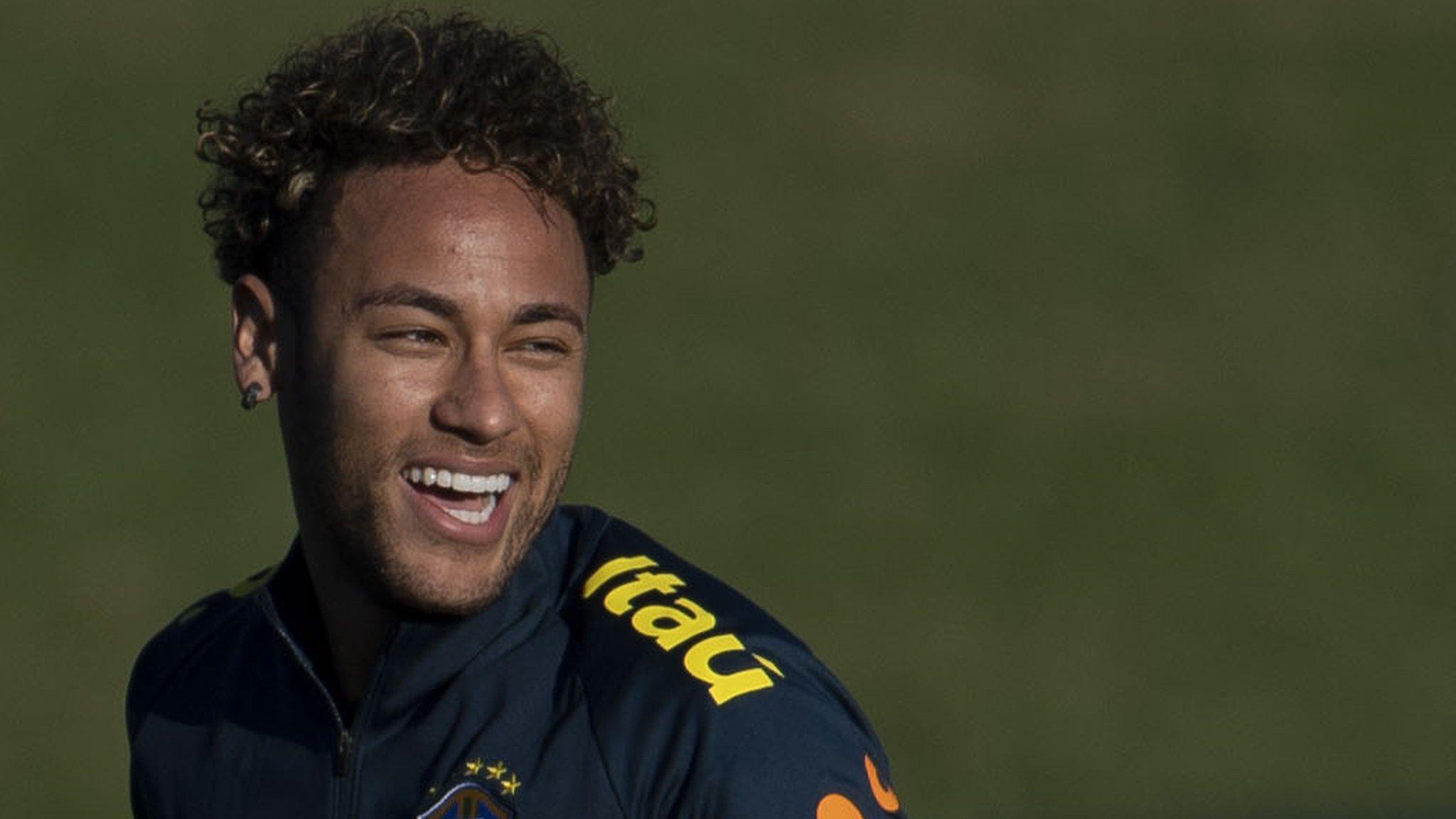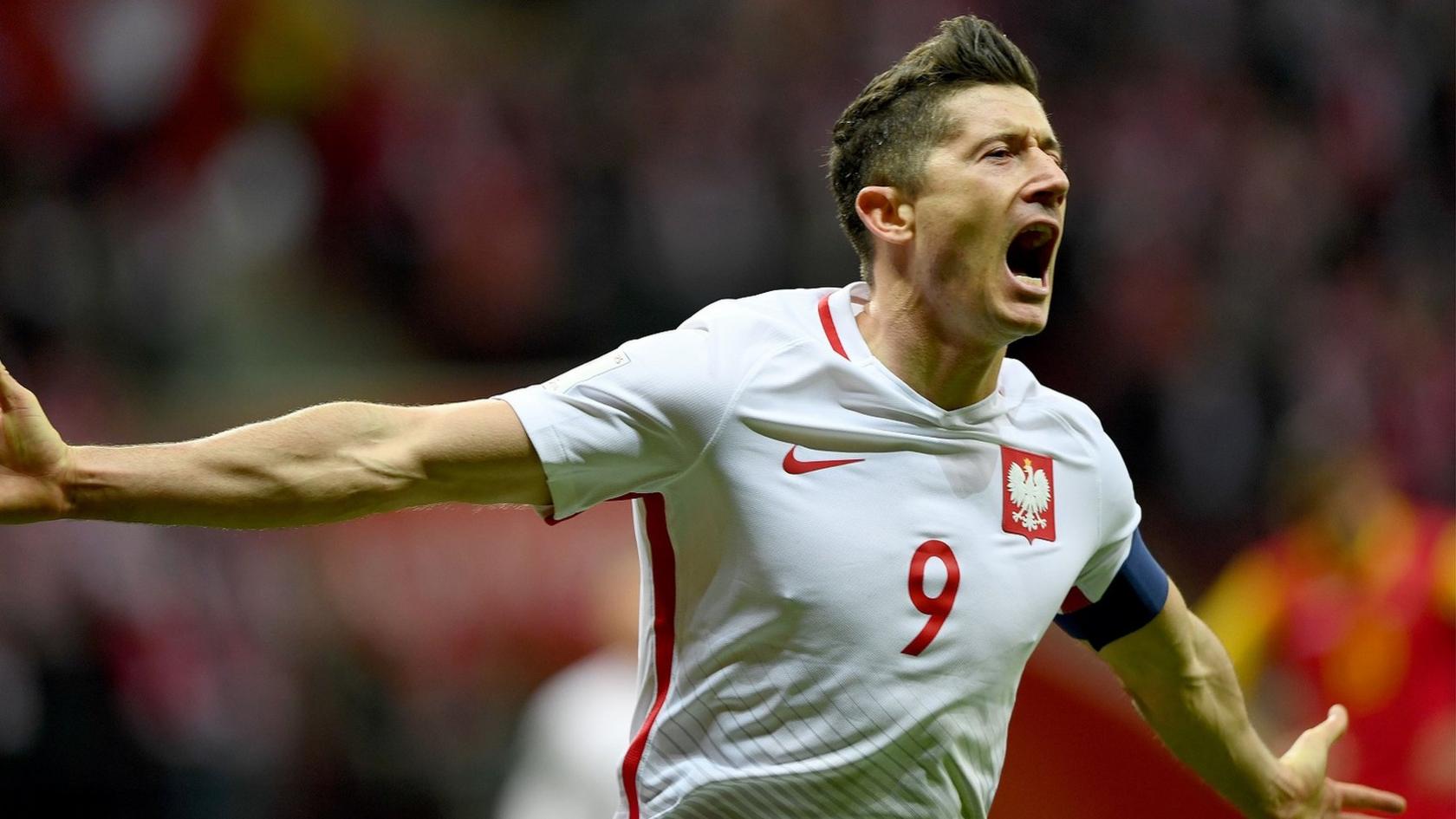World Cup 2018: How coach Tite has brought Brazil into the modern age
- Published
- comments
Brazil 1-7 Germany: The night Brazil collapsed in the 2014 World Cup semi-final
World Cup Match of the Day, 9 July 2014. Argentina have just beaten the Netherlands on penalties to reach the final. But everyone is still trying to assimilate the scarcely credible result from the previous day's semi-final.
Hosts Brazil have been thrashed 7-1 by Germany. What happens now?
"Will Brazil now want a root-and-branch overhaul of their system?" asks Mark Chapman.
"I hope so," I replied - but feared that after a 10-day period of mourning, things would chug along much as before.
And that is how it turned out.
Another dead end with Dunga
Soon after the World Cup, Brazil made the bizarre decision to reappoint former midfielder Dunga as coach.
He had been in charge from 2006-2010. His only other coaching experience was an unsuccessful few months with Brazilian club side Internacional.
He was not a man to carry out any root-and-branch overhaul. His appointment was little more than a denial of reality - although it showed an acceptance that there would be plenty of critical fire.
If we are under attack, went the thinking of the Brazilian FA, then Dunga is our man. A snarling figure, weighed down by the apparent belief that the world was a conspiracy against him, Dunga would fight fire with fire.
Two years later, with a third of the 2018 qualifiers played, Brazil were down in sixth place, outside the qualification slots. There was real fear that the country would lose its proud record of appearing in every World Cup finals.
Dunga was under pressure. His big hope was the Rio Olympics. If he could take the team to their first football gold medal, he would shore up his position and buy himself some more time.
It might have happened. Instead, shortly before the Olympics there was an extra version of the Copa America, staged in the United States, to celebrate the centenary of the tournament.
Dunga's team drew with Ecuador, lost to Peru and were eliminated in the group phase. The axe fell, and Corinthians coach Tite - the popular choice to have taken over in 2014 - was belatedly given the job.

Dunga captained Brazil to World Cup glory in 1994
The rest is history.
There were few changes in personnel. Paulinho, then based in China, was recalled - a controversial move that proved a resounding success. And Tite gambled on the teenage Gabriel Jesus to fill the problem position at centre-forward - and was immediately rewarded.
Those two aside, the same squad that had been at the disposal of Dunga achieved vastly different results under Tite.
A tricky qualification campaign turned into a breeze. Tite's team won 10 games, drew two, scored 30 goals and conceded just three. And they have continued that form in warm-up friendlies against European opposition. They go to Russia with a justifiable place among the tournament favourites.
There is an obvious question here - how could one man make such a difference?
Brazil - from innovators to also-rans
The answer is twofold. It has to do not only with the undoubted merits of Tite, but also with the deficiencies of his colleagues, and of the dead end at which Brazilian football found itself.
There were two separate problems - the dangers of success and the perils of isolation.
Brazilian football was not born great. It achieved greatness as a result of a process. When they won those three World Cups in four tournaments (between 1958 and 1970) they were ahead of the field in term of preparation and tactics.
As far back as 1958, they had a huge back-up staff of doctors, a dentist, a physical preparation specialist - even a premature attempt to use a sports psychologist.
The great Mario Zagallo - a player in 1958 and 1962, coach in 1970 - nearly fell off his chair when I told him that England went to Chile for the 1962 World Cup without so much as a doctor.
And in terms of tactics, they had incorporated ideas from Uruguayan, Argentine and Hungarian coaches, put them together and come up with something new. They were pioneers of the back four.
50 Great World Cup moments: Carlos Alberto's famous goal v Italy - 1970
When they unleashed it in 1958 - still the only time they have won a World Cup in Europe - the extra defensive cover meant they did not concede a goal until the semi-final. By 1970 they had gone further. Zagallo is happy to see that wonderful side as a pioneer of modern day 4-2-3-1.
But so much success made them lazy and complacent, inclined to believe their own myths about innate natural talent.
And as the game moved on, they were dangerously isolated. Hardly any Brazilian coaches came to work in top level European club football, and those who did make the journey failed to last long.
Brazil were caught completely off balance by the Pep Guardiola revolution of a decade ago.
Many in Brazilian football were convinced that physical evolution had made a possession-based game impossible and that the way forward was to bulk up and use quick counter-attacks down the flanks.
They were dangerously out of date - as shown all too harshly when Germany, having taken on board some of Guardiola's ideas, kept passing their way through the 2014 Brazil side on the way to that 7-1 win.
Tite - learning lessons in Europe
The exception to Brazil's failure to evolve and learn is Tite.
At first glance his CV might not seem to contain anything unusual. He has flitted from job to job, fired from most of them. He has never worked in Europe; his position has been that he would be unable to achieve excellence in a second language, although the 57-year-old may be softening on that point.
But in addition to mesmerising communication skills - he comes across a little like a hip priest - he has a curious mind. The key phrase of Brazil's World Cup qualification campaign is his "I have learned how to learn".
When he made his name at the start of the century, Tite was a 3-5-2 specialist.
Later, with Internacional, he thoroughly enjoyed working with the Argentine midfielder Andres d'Alessandro, briefly of Portsmouth, who explained to him the workings of a European 4-4-2. His appetite whetted, Tite has spent long periods in Europe studying the way the top teams play.

Tite has never coached in Europe but has studied the continent's top sides
A big difference in comparison with South America is the way teams stay compact - and it was this that he introduced to his Corinthians side, which in 2011-12 won the Brazilian and South American titles and beat Chelsea in the Club World Cup final.
That team was known for its single-goal victories. The compact nature of the team made them difficult to play through. It was a team based on defensive solidity.
Then came more study in Europe, where Tite's attention focused on the way the best sides achieved numerical superiority in parts of the field where they could hurt the opposition.
All of this was then applied to the Corinthians team that won the Brazilian title in 2015. Much easier on the eye than their predecessors, they were a team whose compact nature was used to facilitate its attacking possibilities - having the team close together opened up options for a pass.
And it is this tactical idea that Tite brought to the Brazilian national team.
In November 2016, after Argentina had been beaten 3-0, the highly influential former Argentina coach Cesar Luis Menotti was full of praise.
"He has brought the defensive line 20 metres higher and brought the team together," he said. "It's like the Brazil of 1970."
Can Tite get the best out of Neymar?
Tite is currently everywhere in TV adverts.
Where Dunga always came across as a warrior, the current boss strikes the pose of a wise man, and one gifted with 'look 'em straight in the eyes' communication skills. Indeed, one critic has referred to him as "a snake charmer".
So far, Brazil has been charmed. With the team getting its mojo back, TV ratings for World Cup qualifiers were extremely high.
And with the country spiralling through economic and political turmoil, the national team have stood as a beacon of hope.
If Tite were to stand in this year's presidential elections he would walk his way in - at least, before the World Cup. True to style, he refuses even to joke about such a serious matter.
The coach has - without seeking it - gained the same kind of star billing as striker Neymar. Much may depend on the relationship between the two over the next few weeks.

Neymar has scored 53 goals in 83 appearances for Brazil
The current Brazil side is nowhere near as dependent on Neymar as was the case in 2014. They are much more of a coherent, cohesive, functioning team - as they proved to themselves with recent friendly victories away to Russia and Germany, achieved while Neymar was recuperating from his metatarsal injury.
Clearly, though, the talent of Neymar is a huge plus. It comes with two potential problems.
One is that his desire for individual glory may not always be in the best interests of the team; this was the case in November's 0-0 draw with England at Wembley, where he consistently tried to do too much.
Neymar is so good, and sees things so quickly that he has a range of options. Under pressure, will he choose the right one for the team? Tite must try to ensure he does.
And he also needs to control Neymar's occasional acts of petulance.
There are phases in the game when Neymar appears obsessed with drawing fouls. He then goes to ground very easily. The opponents become annoyed, the temperature of the game rises and Neymar can then become a victim of that temperature. In 14 qualifiers he picked up six yellow cards. Project that into the World Cup and he could easily miss a vital knockout game.
And this time, Brazil want him all the way to the end of a campaign that, they hope, will end with World Cup win number six, and their first in Europe for 60 years.
- Published29 May 2018

- Published23 May 2018

- Published4 June 2018

- Published14 May 2018
